Series Title Sequence:
New Teacher Survival Guide
Program Title:
Lesson Planning
ACT 1 : INTRODUCTION – CHALLENGE
Beat 1: Intro to Nicole
Establishing shot of school
Nicole sitting at her desk prepping class NICOLE RUBINETTI IS A FIRST YEAR ENGLISH TEACHER AT EASTSIDE HIGH SCHOOL IN NEWARK, NEW JERSEY.
INTV Nicole
East side high school is a comprehensive high school with a magnet touch.
Demographically, Portuguese, Brazilian, but its definitely a diverse high school as well.
See nicole and student NICOLE ENJOYS TEACHING AND HAS A CLOSE RAPPORT WITH HER STUDENTS, BUT PLANNING ENGAGING LESSONS FOR HER EIGHTY-MINUTE CLASSES IS A CONSTANT CHALLENGE.
It’s when kids are bored and when they aren’t interested in what’s going on, because then I have to reflect and think,
OK maybe it’s me, maybe I’m not presenting this in a clear way.
TODAY, NICOLE IS STARTING A NEW UNIT ON WRITING PERSONAL STATEMENTS FOR COLLEGE.
Meg looking over her shoulder... at computer IT’S A CRITICAL SET OF SKILLS HER STUDENTS NEED TO MASTER – AND SHE’S BEEN WORKING CLOSELY WITH HER DEPARTMENT CHAIR TO PLAN THE LESSON.
Lower third
Meg Murray
English department Chair
Murray: ... A lesson plan embodies what students are going to do throughout the lesson, what actual skills you're going to teach to students, and what students are going to do with those skills in order to master them.
Murray: So, lesson plan creates purpose.
Murray: So tell me a little bit about the class that you’re going to be teaching tomorrow.
Rubinetti: They are juniors. Some of them have already taken the SATs and have already taken the HSPA, so the last couple weeks are really going to be geared towards college, real life practices.
Murray: That sounds perfect. So you’re going to start working on personal statement writing for the next class?
Rubinetti: Yes. I want to introduce it.
Meg: What do you think your main goal is?
INTV Meg Murray: One of the first steps that I talk to teachers about when they're going to plan a lesson is really thinking about the ending.
What do you want students to walk away from your class knowing? And that is your objective. So, the objective is specific, and skill-oriented, and it has to be measurable.
Rubinetti: My main goal is going to be to have the students complete the introduction to their personal statement.
Tip
Create an objective that is specific, skill-oriented and measurable.
Murray: We have to be very specific.
The skill here is persuasive writing,
I would say because students have to persuade a college they need to be accepted
When I think about your lesson the objective is you want students walking away from your classroom knowing what effective and ineffective strategies for personal statement writing are.
Hall ways, bell, kids entering... transition into classroom..
Nicole: Ok guys, today we're going over personal statements. By the end of this class, I want you to be able to identify a powerful personal statement topic, or if it's ineffective and just general.
Shot of the powerpoint presentation: cartoon
ONCE AN OBJECTIVE IS CLEARLY DEFINED, THE NEXT STEP IS TO BREAK DOWN THE LESSON INTO MANAGEABLE PARTS.
Meg: When I think of a lesson plan, I couch it in there of a Do Now, a mini-lesson, guided practice, independent practice, and then your assessment.
Murray : Each chunk plays a part in achieving the goal that you’ve set out from your objective.
Meg:
To begin that lesson, you are going to have a Do-Now. And in my mind, a Do Now is a focused way to invest your students in what you need them to do.
Meg: When each piece of your lesson has a purpose and flows well and is related to your objective, there will be a natural transition.
Graphic: Tip
Create a Do-Now that sparks student interest in the lesson. Meg:
What do you think an effective Do Now for that lesson would be?
Rubinetti:
They have to compose at least five questions that they would ask somebody if they really wanted to get to know that person. To get them in the mindset of what a good personal statement is.
Nichole: Ok guys ten minutes. Date, and and the do- now, you are to work with one other person...
INTV Meg
Meg :
A Do-Now is usually 10 minutes max, it's a very short thing; sometimes you can connect it to students’ lives.
The Do-Now for many teachers is a routine as well, so it's a way for students to come in to your class, to get out their materials, to be prepared for the day, and learning starts then.
Subtitle student bite Rubinetti: Kevin can you read the prompt for the do now?
Kevin: if you would want to get to know someone, what type of questions would you ask? Generate five questions with your neighbor.
Rubinetti: Ok, who wants to share their questions...
THE NEXT STAGE OF THE CLASS IS THE MINI-LESSON
Murray: This is your opportunity, in the mini-lesson, to give specific details and information about what you want students to learn.
Graphic: Tip:
Present key concepts during the mini-lesson.
Murray: The mini-less can last from fifteen to twenty-five minutes. The mini-lesson is really the crux of instruction. Teacher needs to teach a certain skill or an idea, and so the mini-lesson is the teachers’ opportunity to instruct and get that skill across.
Meg: So in your mini-lesson, what are you going to do?
Rubinetti: I’m going to show them some sample essays.
Murray: ok
Rubinetti: And I want them to dissect and actually identify -- this is why this essay is good. It will probably be done by using a powerpoint.
Murray: How long do you think that is going to take?
Rubinetti: I think may take twenty, twenty-five minutes.
Actuality:
Nicole: What do you think a pesonal statement is for?
Student: It tells, like, why you're more interesting than other people that apply, because there's thousands of applications at every college
Murray: During that twenty-five minutes, you are doing the powerpoint, you are showing effective and ineffective examples, what are students doing?
Rubinetti: Students will be taking notes of what is effective and ineffective, and so they will be practicing our note taking.
Murray: When I talk to teachers about the mini-lesson, part, I’m really, I also really push them to think, yes, this is your opportunity to give instruction in the classroom, but I also want you to think about what are the student doing during that time. So if you are giving a powerpoint or you are having students read something and you will discuss it – you need to think through specifically what students are doing in that time.
Meg: You said students are taking notes. I’m going to even push back and say that you need to have a specific method that students are going to take notes.
You could have maybe a T-Bar, during this note taking session. On one side is effective strategies and the other side is ineffective strategies. So students know exactly what they are looking for and there is no confusion.
Nicole: Ok, while we are viewing the powerpoint you guys will be taking notes in your note books, but also on this T- chart. Ok, so today we're going to identify the effective techniques and the ineffective techniques. So kind of the do's and don’ts of personal statements.
TO REINFORCE THE CONTENT OF THE MINI-LESSON, THE NEXT STEP IS TEACHER-GUIDED PRACTICE.
INTV MEG
Graphic: Tip:
Use guided practice to model the concepts being taught.
Murray: Guided practice to me is the teacher’s opportunity to model and show exemplars.
The students themselves are looking at models, they're not yet creating it themselves; they're just identifying what makes something effective.
Nicole: So let's reads these sample personal statements. Let's act as if we were to accept or deny this person into our college... and then you have to tell me why, your reasons... Ok, Second paragraph, could you read it to us...
Student: Because my parents are divorced, I didn not have a secure sense of home.
Nicole: Ok, what do we think about that paragraph? Effective, ineffective, or why?
To much family?
Student: Are yo selling youself to my school? Why would I want a person that was juggled through homes, doesn't know what relegion they are, you're not selling yourself to me.
DURING GUIDED PRACTICE, TEACHERS SHOULD MOVE AROUND THE CLASSROOM TO ENSURE ALL STUDENTS REMAIN ON TASK.
Meg: It’s important to have a plan, to walk around, to know specifically who you have in front of you. You know that this group back here likes to talk and maybe be off task, so your proximity is paramount.
A WELL-DESIGNED LESSON ALSO INCLUDES TIME FOR INDEPENDENT PRACTICE.
Graphic: Tip
Use Independent Practice to allow students to apply new concepts and skills Murray:
Students are ready at that point to take what's been taught previously in your lesson and use it on their own to create what you want them to create, to use the skills that you've taught that day.
Rubinetti: What should we not do.. lie, don't joke, no slang, don't complain, yes. I'm glad that you guys have these opinions, because now it's going to be your turn.
Rubinetti: After you have your possible topic you are going to flip the paper – let’s flip the paper over – great. You are going to write, up here, the topic you choose, and then you are going to compose your introduction.
AT THE END OF CLASS, TEACHERS SHOULD ASSESS HOW WELL STUDENTS HAVE MASTERED THE LESSON.
Meg:
How do you know that every student in your class has mastered what you want them to master?.
Rubinetti: I was hoping that their exit ticket would be just their introduction to their personal statements. They would hand that in before they leave.
INTV Meg
Graphic: Tip
Assess student mastery based on the lesson plan objective
Murray: The assessment is really you go back to your objective and you think about what skill was I intending to teach today?
What skill was I intending students to master today?
So in Ms. Rubinetti’s class, the assessment is going to be, “Can students produce an effective personal statement? Can students identify what makes it effective, what makes it ineffective?”
Meg: So by the end of this lesson, at the end of this 80 minutes, you’re going to know what?
Rubinetti: That they can compose their introduction using the techniques that we talked about during PowerPoint.
LESSONS DON’T ALWAYS GO AS PLANNED – AND NICOLE, RUNNING OUT OF TIME, DECIDES TO TURN THE EXIT TICKET – INTO A HOMEWORK ASSIGNMENT.
Nicole: Instead of having you write your introduction today, these questions are very important – I want you guys to just generate 3-5 topics – take this home with you – so now this becomes your homework -- and we’ll discuss tomorrow.
See clock, hear bell ring.
Nicole: Resumes and cover letters go in the bin – your homework from last night go in the bin if it’s not already there.
NICOLE’S CLASS IS OVER, BUT THE LESSON PLANNING PROCESS IS NOT YET COMPLETE.
Murray: I think the final step in lesson planning is reflection.
Graphic: Tip:
Take time to reflect on the lesson after it has been taught Meg: And I go back to my lesson plan and now I have all the tools that I need because I actually taught the lesson.
I remember what students were doing, I remember what I was doing. And so I analyze each part of my lesson, and I try to pinpoint the part where things fell apart. And then I think, what could I do next time?
Meg and Nicole together.
Meg: Nicole, how did you think that lesson went?
Nicole: My main goals for this class. They were supposed to have their introduction completed. Or at least the first draft. An introduction to their personal statement. That did not go as planned. We ran out to time. It’s always hard to gage
will students pick this up easily and be able to knock it out in five minutes or will they need twenty minutes -- so some times its difficult to tell.
Meg: I think that pacing is one of the hardest things in a lesson plan, we chunk it, we assign times to it, but sometimes a certain section lasts longer, or doesn’t last as long as we intended it to last. So there is this juggling act of being flexible and thinking on your toes.
Meg: I really think that students did accomplish the goals you set out for them. And I think from you mini-lesson and from the discussion that student had after that mini-lesson, and even when they were starting to write it themselves, they were able to identify and recognize what good writing looked like. what was interesting about it and what was not interesting about it. I think you are doing amazing things with your students and I’m excited to see what their personal statements look like in the end.
Nicole: Thank you.
CREATE AN OBJECTIVE THAT IS SPECIFIC, SKILL-ORIENTED AND MEASURABLE.
CREATE A DO-NOW THAT SPARKS STUDENT INTEREST IN THE LESSON
PRESENT KEY CONCEPTS DURING THE MINI-LESSON.
USE GUIDED PRACTICE TO MODEL THE CONCEPTS BEING TAUGHT.
USE INDEPENDENT PRACTICE TO ALLOW STUDENTS TO APPLY NEW CONCEPTS AND SKILLS.
TAKE TIME TO REFLECT ON THE LESSON AFTER IT HAS BEEN TAUGHT.
ASSESS STUDENT MASTERY BASED ON THE LESSON PLAN OBJECTIVE.


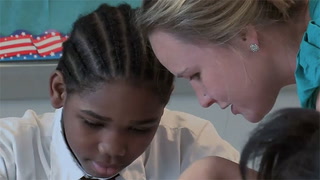
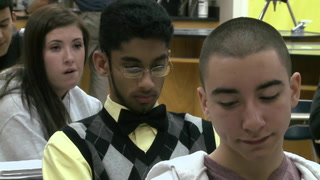

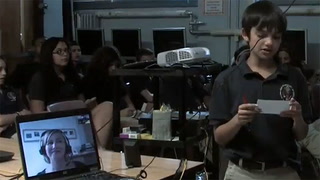
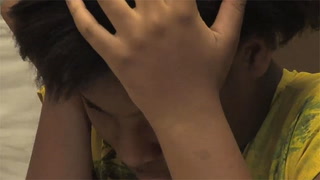
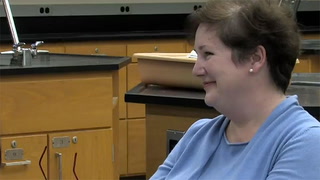
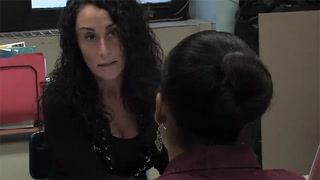








110 Comments
Liliana Zuniga Apr 12, 2023 9:20pm
Making a specific objective helped me to understand the importance of guiding the students. The students share their statements. I also learn the importance of "Do Now" using questions. The fundamental concepts of the mini-lesson are presented in the class.
The independent practice was presented, and the Objective was incorporated into the lesson.
Erin Zost Dec 15, 2021 12:14pm
This video showed how important lesson planning and time management are to teaching. The objectives were clear and examples showed the students how their statements should look. I liked that the students gave feedback to their peers. Time running out on the teacher shows how important it is to plan and leave time for lesson adjustment.
Irma Lopez Mateo Oct 5, 2021 11:54pm
Even if you don't have a coach writing your lessons with you, what questions can you ask yourself as you plan to cover all the bases?
I would try to use past experiences to consider what I believe would have made a difference then. From there I would consider the diverse cultures, ethnicities, academic standing, and resources available. I would consider conducting lessons that will engage my students and ensure that the takeaways from the lessons are not only academic ones.
What routine do you use to reflect on each lesson?
There are exit tickets that I would implement at the end of the lesson, like a small check for understanding. I would see what my students are able to walk away with. Also, I would allow a space for them to share their thoughts on the lesson and what they would have done differently if it were up to them. Prior to the end of the day, I would have a discussion with them and get further insight into their experience.
What advice would you give Ms. Rubinetti to improve her pacing?
I would suggest to Ms. Rubinetti to use a priority checklist. For instance, if she were to break down the lesson into smaller parts to consider where time would be reduced for some and additional time allotted for others.
HANIN ALSULTANI Sep 7, 2021 4:23am
Do I need to pay to watch this video? I thought this channel was free.
Laura Waitulionis Jul 23, 2021 7:22pm